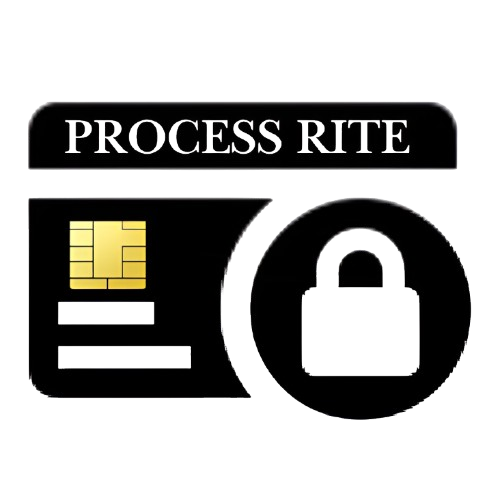A Point of Sale (POS) system in a restaurant is a combination of hardware and software that manages sales transactions, tracks inventory, and enhances customer experience. Modern restaurant POS systems streamline operations, optimize workflows, and provide valuable business insights.
Table of Contents
- What is a Restaurant POS System?
- How a POS System Works in a Restaurant
- Key Features of a Restaurant POS System
- Types of Restaurant POS Systems
- Benefits of Using a POS System in a Restaurant
- How to Choose the Right POS System for Your Restaurant
- Costs Associated with Restaurant POS Systems
- Common Challenges and Solutions
- POS System Integrations with Other Software
- Security Considerations in Restaurant POS Systems
- Future Trends in Restaurant POS Technology
- How to Implement a POS System in Your Restaurant
- Best POS Systems for Restaurants in 2024
- Frequently Asked Questions (FAQs)
- Conclusion
1. What is a Restaurant POS System?
A restaurant POS system is a digital solution that allows businesses to process transactions, manage orders, and oversee daily operations efficiently. Unlike traditional cash registers, modern POS systems integrate various functions such as inventory tracking, employee management, and customer relationship management.
2. How a POS System Works in a Restaurant
A restaurant POS system works by recording customer orders, processing payments, and updating inventory levels in real time. It typically consists of:
- A touchscreen monitor or tablet
- A cash drawer
- Receipt printer
- Card reader
- POS software with cloud-based or on-premises functionality
3. Key Features of a Restaurant POS System
Order Management
- Customizable menu options
- Order modifications
- Table assignments
Payment Processing
- Credit/debit card payments
- Mobile payments (Apple Pay, Google Pay)
- Split payments
Inventory Management
- Real-time tracking
- Automatic stock alerts
- Vendor management
Employee Management
- Shift scheduling
- Payroll integration
- Performance tracking
Customer Relationship Management (CRM)
- Loyalty programs
- Customer feedback collection
- Personalized promotions
4. Types of Restaurant POS Systems
Traditional POS Systems
- Installed on-premises
- Requires dedicated hardware
Cloud-Based POS Systems
- Accessible from anywhere
- Automatic software updates
Mobile POS Systems
- Used on tablets or smartphones
- Ideal for food trucks and pop-up restaurants
Self-Service Kiosk POS
- Customers place orders independently
- Reduces wait times
5. Benefits of Using a POS System in a Restaurant
- Increased efficiency: Reduces order processing time.
- Enhanced accuracy: Minimizes human errors.
- Better inventory control: Prevents overstocking or shortages.
- Improved customer experience: Faster service and personalized promotions.
- Robust reporting and analytics: Data-driven decision-making.
6. How to Choose the Right POS System for Your Restaurant
- Identify business needs: Full-service, fast food, or fine dining.
- Check compatibility: Integration with existing tools.
- Evaluate user-friendliness: Easy-to-use interface.
- Consider pricing: Subscription vs. one-time purchase.
7. Costs Associated with Restaurant POS Systems
| Cost Component | Estimated Price Range |
|---|---|
| Hardware | $500 – $5,000 |
| Software | $50 – $300/month |
| Installation | $500 – $2,000 |
| Payment Processing Fees | 2% – 3% per transaction |
8. Common Challenges and Solutions
High Initial Costs
- Solution: Opt for cloud-based subscription models.
Technical Issues
- Solution: Ensure 24/7 customer support.
Staff Training
- Solution: Choose a user-friendly POS system with training modules.
9. POS System Integrations with Other Software
- Accounting software (QuickBooks, Xero)
- Online ordering platforms (Uber Eats, DoorDash)
- Loyalty programs
10. Security Considerations in Restaurant POS Systems
- Data encryption: Protects customer payment data.
- User access controls: Prevents unauthorized transactions.
- Regular software updates: Fixes vulnerabilities.
11. Future Trends in Restaurant POS Technology
- AI-powered analytics
- Voice-activated ordering
- Integration with smart kitchen devices
12. How to Implement a POS System in Your Restaurant
- Select the right POS system.
- Install hardware and software.
- Train staff on usage.
- Test the system before full deployment.
- Monitor performance and optimize settings.
13. Best POS Systems for Restaurants in 2024
- Square POS – Best for small restaurants.
- Toast POS – Best for full-service restaurants.
- Lightspeed POS – Best for scalability.
- Clover POS – Best for ease of use.
14. Frequently Asked Questions (FAQs)
1. What is the best POS system for a small restaurant?
Square POS is often recommended for small restaurants due to its affordability and ease of use.
2. Can a POS system work without the internet?
Some POS systems have offline mode capabilities, allowing transactions to be processed without an internet connection.
3. How much does a restaurant POS system cost?
Costs vary but typically range from $50 to $300 per month for software, plus additional hardware costs.
4. Is cloud-based POS better than traditional POS?
Cloud-based POS offers greater flexibility, remote access, and automatic updates, making it a preferred choice for many restaurants.
5. Can a POS system track employee performance?
Yes, most modern POS systems include employee management features to monitor work hours, sales, and performance.
6. Do POS systems integrate with online ordering platforms?
Yes, many POS systems integrate with third-party delivery apps like Uber Eats and DoorDash for seamless order management.
15. Conclusion
A restaurant POS system is an essential tool for modern eateries, helping to streamline operations, improve customer service, and increase profitability. By selecting the right POS solution and leveraging its full potential, restaurant owners can enhance efficiency and drive business growth.

